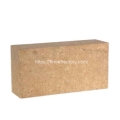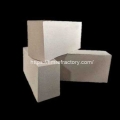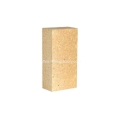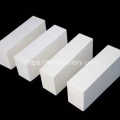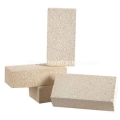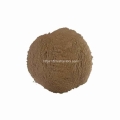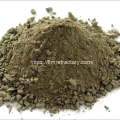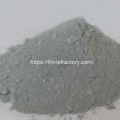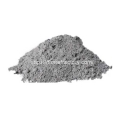- Performance. Innovation. Worldwide. Your trustworthy Refractories Manufacturing Partner--Fireramo
- +86 175 3769 7777
Contact
Contact us on WhatsApp
High Quality Refractory Bricks
Insulation Bricks for Sale
Monolithic Refractory
Characteristics of 7 types of aluminum melting furnace and refractory material selection
Aluminum melting furnace is mainly reflector furnace, rotary furnace and induction furnace, etc., the operating temperature is generally 700-1000 ℃. This type of furnace lining damage is mainly caused by the penetration and scouring of aluminum liquid, the lining is generally used clay brick, high alumina refractory bricks and corundum mullite brick masonry, can also be used in high alumina refractory castables and refractory can be made of plastic, due to the use of good conditions, the furnace has a long service life.

Refractories for Reflection Furnace
The furnace is divided into fixed and tilting type two kinds, generally using gas or heavy oil as fuel. Aluminum melting is usually fixed reflector furnace non-working layer with refractory fiber felt and clay heat-insulating refractory brick masonry, the working layer of the part of the pool above a stream of clay brick masonry, can also be used in high alumina refractory castable prefabricated blocks suspended or poured at the scene or with high alumina fire-resistant plastic pounded into the working layer of the pool according to the use of different skills, the material is also different, in general the use of Al2O3 content of 75% or more of high alumina refractory materials. In general, it is made of high alumina refractory bricks with Al2O3 content of more than 75%, or it can be made of high alumina refractory castables with Al2O3 content of more than 80%, when melting high purity aluminum metal, it is suitable to build the working layer of the melting pot with high purity mullite, zirconia or corundum bricks. In order to resist the penetration and erosion of aluminum liquid, large silicon carbide bricks are generally used for the masonry of aluminum discharge opening, aluminum flow tank and its lining.
The refractories used in the humidifying furnace and its melt and alloy material processing room are basically the same as those used in the reflecting furnace. When aluminum ingot or scrap aluminum is used as raw material, it can be directly loaded into the furnace chamber for melting from the charging port. When electrolytic aluminum liquid is used as raw material. Clover first from the bottom of the aluminum electrolysis tank with a siphon tube or vacuum bag suck out the aluminum liquid, and then transported to the reflector furnace. Pouring from the charging port, after charging, heating while blowing chlorine into the molten pool for dehydrogenation buried, siphon lining is generally used for refractory fiber reinforced lightweight refractory castables as an adiabatic layer, but also available clay heat-insulating refractory bricks masonry, and its working layer is commonly used in dense Fireclay bricks or corundum bricks masonry. The heat insulation layer of the inner village of the vacuum bag is the same as that of the siphon. Its working layer is constructed with high quality clay bricks or high aluminum refractory bricks. Under normal operation, the service life of the reflector furnace and insulation furnace is generally 2-5a.
Refractories for rotary furnaces
The furnace non-working layer with clay insulating refractory bricks or drift bead brick masonry, can also be used for bulk density of 1.0g/cm3 of lightweight refractory castables poured or made into prefabricated block masonry: work with dense clay brick or for the aluminum-containing greater than 55% of the high-alumina refractory brick masonry, the age of the rotary furnace is generally 300-500 times. When adding salt melt melting aluminum block. Due to increased chemical erosion, the age of the furnace has been reduced.
Refractories for induction furnace
The furnace is generally lined with clay bricks or tertiary high alumina refractory brick masonry. The bottom of the furnace is sometimes first poured with high-alumina refractory casting material for the grass-roots level, and then lay high-alumina refractory bricks. When the capacity of the induction furnace is less than 10t, the lining can be made of high alumina refractory castables or refractory tamping materials with an Al2O3 content of about 75%, or corundum refractory castables or dry vibrating materials can also be used. Furnace inductor coil around the lining, generally used corundum refractory castable whole pouring or dry vibration material vibration compact. Due to the different kinds of raw materials and conditions, the service life of the furnace is also different, the general age of the furnace is 0.5-4.0a. During the use of the lining around the coil and other vulnerable parts should be 1-5 times of minor repairs.
Refractories for Holding Furnaces
Aluminum holding furnace is divided into slot induction furnace, resistance heating pool furnace and gas chamber furnace. This type of equipment due to the low operating temperature, generally use clay bricks and other materials for the liner, but also to obtain a high service life.
Refractories for Channel Induction Furnaces
The furnace lining structure for the first by the furnace shell paved 10mm of asbestos sheet or refractory fiber felt, and then masonry clay heat-insulating refractory bricks or bleached bead bricks for the adiabatic layer; the furnace’s working layer and the coil around the lining of the general use of clay refractory pounding material pounding, can also be used for clay refractory pouring material site pouring, the work of large-scale groove induction furnace layer, can also be used for the Al2O3 content of more than 55% of the high alumina refractory bricks masonry.
Refractories for resistance heating pool furnace
The non-working layer of the furnace with clay heat-insulating refractory bricks, drift bead bricks or heat-insulating plate masonry. Can also be used for bulk density of 0.8g/cm3 of lightweight refractory castables as a whole pouring; melting pool working layer using Al2O3 content of about 80% of high-alumina refractory brick masonry, can also be used for bulk density of 2.4g/cm3 of high-alumina refractory fire castables pouring. The working layer above the melting pool is generally masonry with clay bricks or prefabricated blocks of refractory castable material, and also can be used for pounding with high-alumina refractory plastic.
Refractories for gas chamber furnace
The furnace is composed of furnace bottom, furnace wall and furnace top. Can be used alone, in order to save energy, easy to manage, can also be used in conjunction with the aluminum refractory furnace. The lining material is clay brick and high aluminum refractory brick.
Refractories for Aluminum Water Tank
Aluminum water tank is used to contain aluminum, transportation and casting of thermal equipment. The tank wall non-working layer with clay heat-insulating refractory brick masonry, can also be used for bulk density of 1.5g/cm3 of lightweight refractory casting material pouring. The working layer is masonry with clay bricks or high alumina refractory bricks, or can be used for alumina hollow ball refractory casting material as a whole; the bottom of the tank is masonry with high alumina refractory bricks or corundum refractory casting material as a whole, and the surface of which is coated with fire-resistant coating material as a protective layer. The casting mouth is generally masoned with silicon carbide bricks, corundum bricks or fused silica bricks due to the cutting and erosion of aluminum liquid. China generally use the plug stick device to control the pouring of aluminum water tank liquid aluminum.
Aluminum refining refractories
Refining thermal equipment used for the electrolyzer. The groove groove wall with magnesium brick masonry, the rest of the parts with clay bricks and high alumina refractory bricks, electrolysis, groove temperature is generally 720-800 ℃, the groove lining using good conditions, low operating temperature, so the service life is long.
Specializing in refractory materials for over 20 years, we provide professional refractory solutions for the global high temperature industry.
Related Posts:
- Causes and solutions to cracking of castables after baking
- Enhancing the Medium Temperature Strength of Refractory Castables
- Ways to ensure the accuracy of refractory brick acceptance results
- Acceptance inspection after cement kiln construction
- Three Common Ways of Damage to the Sliding Nozzle for Ladles
Theme By Fireramo

